Fundamentals of Sound |
|
Fundamentals of Sound |
|
|
Perceptual attributes of acoustic waves |
LOUDNESS |
-
Loudness & Intensity |
| Adaptation, Fatigue, & Temporary Threshold Shift (TTS) |
| Hearing Loss & Conservation |
Perceptual attributes of acoustic waves: Loudness
| Loudness:
Sonic (i.e. perceptual) attribute of sound
waves,
related mainly
to intensity. In general, high intensity values result in 'loud' sounds while low intensity values result in 'quiet' sounds.
Stevens's Power Law
|
|
Dynamic Range of the ear: A range of Intensities/SILs that the auditory system can process effectively, bounded by lower and upper limits. Dynamic range of functional and safe hearing: from ~10-12w/m2 or 0dB (at 1000Hz) to ~1w/m2 or 120dB (at all frequencies).
|
Just Noticeable Difference (JND) for loudness: ~1dB - for pure (sine) tones, middle frequencies and 'regular' background noise. Weber's law (for Just Noticeable Difference)
|
Loudness & Frequency / Loudness Scales
Effects of Frequency on Loudness
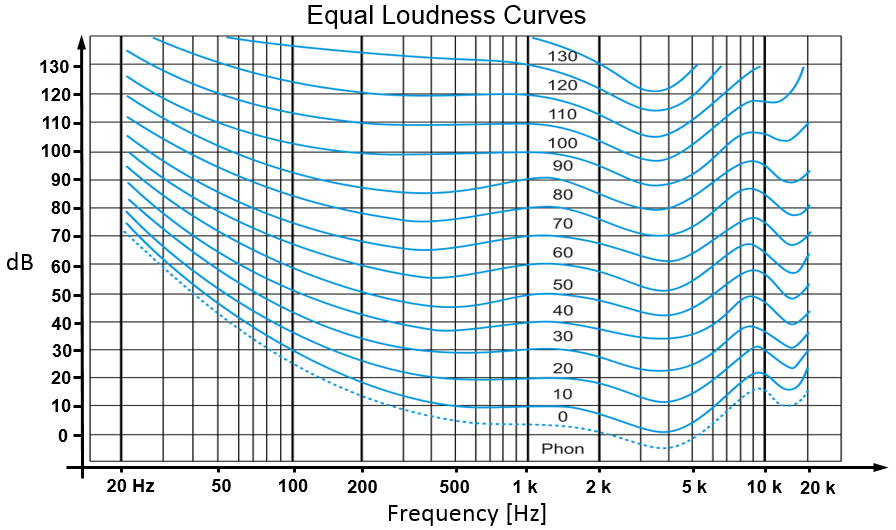 Equal loudness contours/curves for pure tones (after Fletcher and Munson, 1933)
For example (see above): | |
|
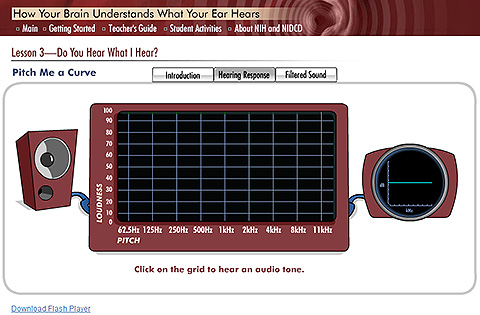 |
|
LOUDNESS SCALES Loudness Level Unit
|
|
Weighting Curves (spectral filters) A variety of weighting curves have been devised (A, B, C, and D) to assist electronic/digital recording, measuring, and broadcast equipment (with assumed flat, or near flat response) in simulating the ear's frequency-dependent response to intensity. These curves are mainly used in noise measurement, loudness calculations, and hearing evaluations and NOT in sound mixing and mastering. Each type of curve captures best the ear's response at a different input-level range.
|
The A-weighting curve is the one most commonly used in environmental noise assessments. The C-weighting curve is used specifically for low-frequency noise assessment. The B- and D-weighting curves are rarely used and have now been removed from the international standard for loudness measurement. |
For more details see the opening
paragraphs of the articles on Weighting Curves in Wikipedia
and the
Lindos Electronics
page (UK).
|
|
|
Loudness Unit |
|
Loudness magnitude matching experiments reveal the dependence of loudness on frequency but do not
give us information that would help construct an absolute loudness scale.
Loudness magnitude estimation & production experiments use as standard reference a 1000Hz tone at 40dB SIL. The sound loudness level (SLL) of any tone is then described in relation to this reference standard, whose loudness is defined as:
1 Sone (Loudness unit): The advantage of the Sone scale is that it is based on loudness units that are proportional to loudness and can be manipulated arithmetically (e.g. two sones sound twice as loud as one, three sones sound three times as loud, etc.). |
Graphical depiction of the relationship between Phons
and Sones The Sone scale is more valid than the dB and phon scales, because it was derived based on both sine and complex tone loudness judgments. Nonetheless, most discussions on loudness use dBs and Phons because of the complex transformations necessary to work with Sones. |
Loudness and Spectrum (bandwidth)
|
Effects of Spectrum (bandwidth) on Loudness
|
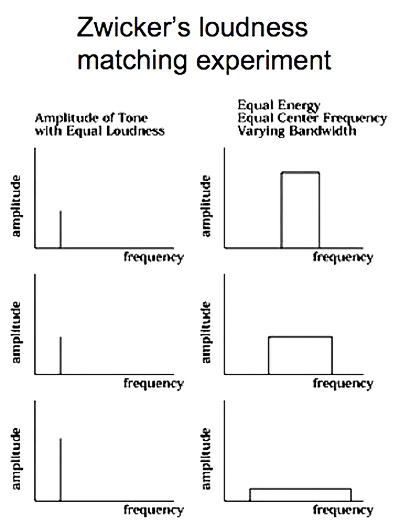 |
|
| |
Effects of Duration on Loudness
|
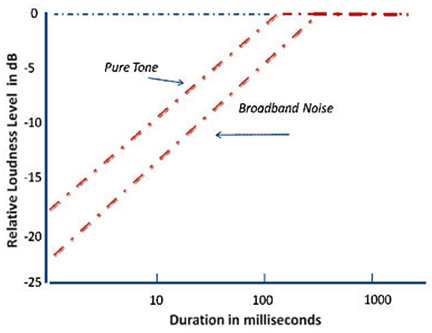 |
Loudness and time-delay among successively presented stimuli:
|
SUMMARY
(Loudness &
Intensity / Frequency / Spectrum / Duration)
Loudness & Intensity
Loudness & Frequency
Loudness & Spectrum
Loudness and Duration
Links to Save for Future Reading
|
Adaptation, Fatigue, & Temporary Threshold Shift (TTS)
[
PDF Copy, including graphs ]
[ Print-Friendly Copy (4 slides/page) ]
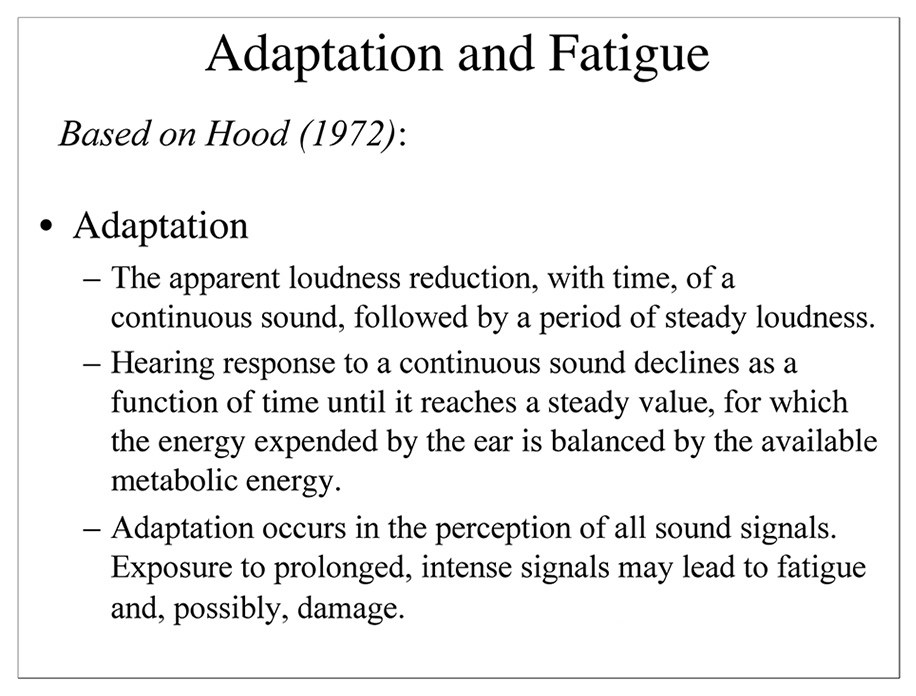
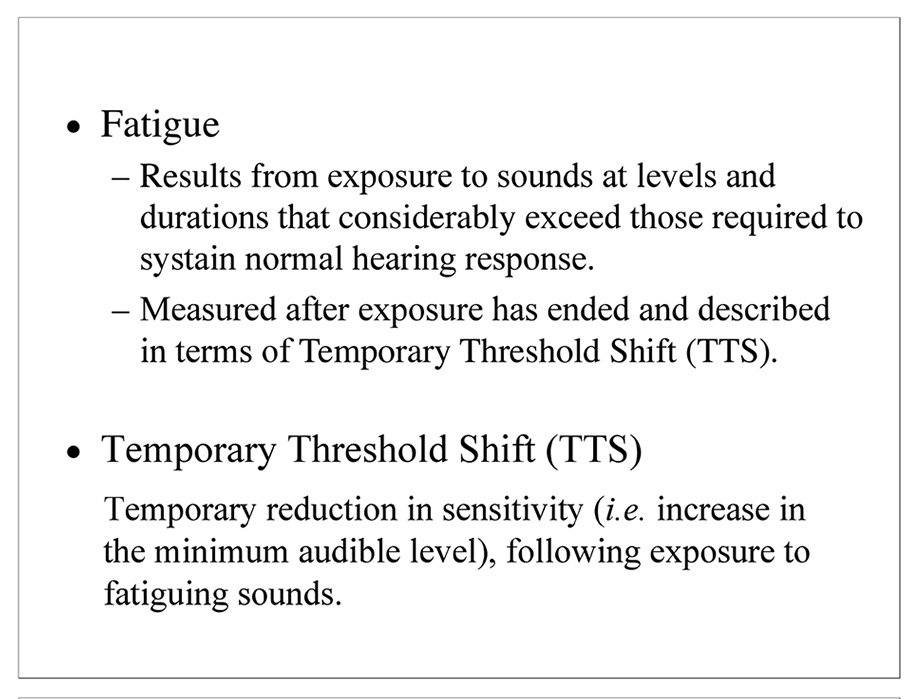
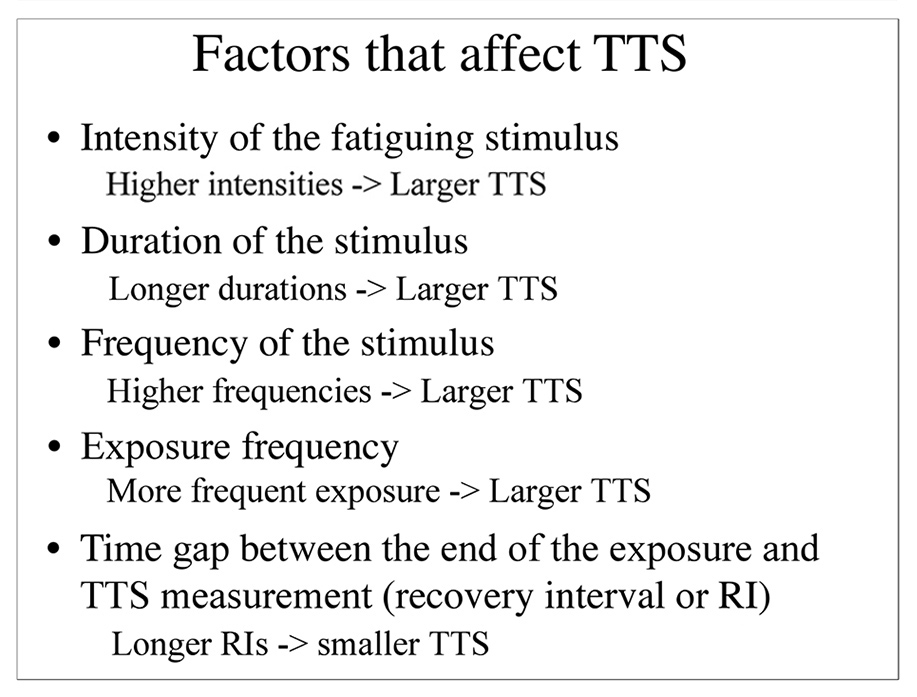
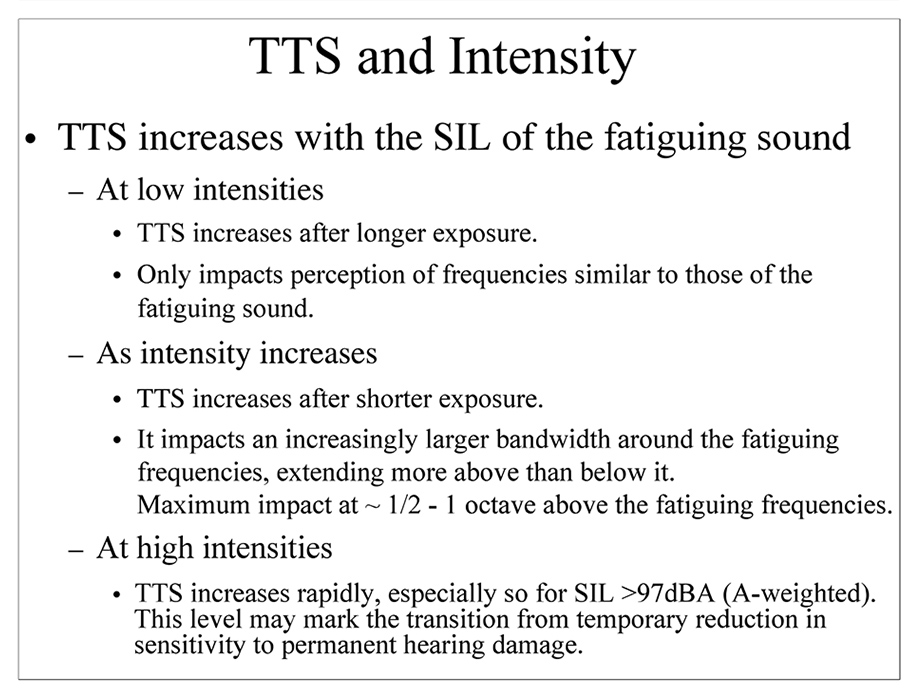
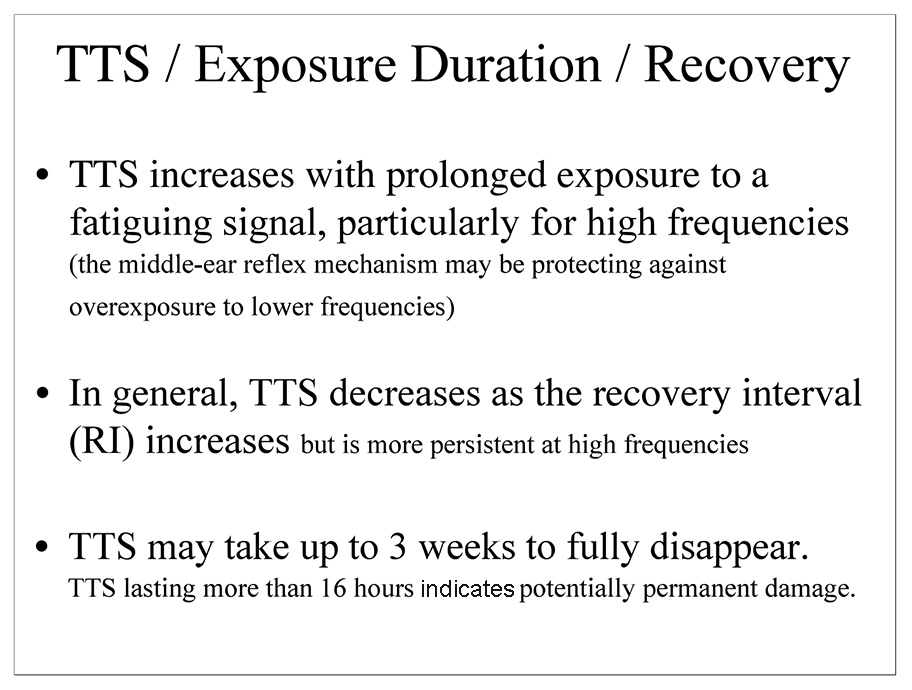
Hearing loss is a common condition caused by
noise, aging,
disease, and heredity.
|
|
|
Hearing loss due to environmental and behavioral factors (as opposed to age and heredity) is both more significant and easier preventable.
.
Unfortunately: Noise- and music-induced hearing loss
is cumulative, irreversible, and
painless (no pain warnings). |
Music-induced hearing loss (MIHL) results
from exposure to music at levels >85 dB (analogous to the sound of heavy city traffic) for prolonged periods of time.
The leading cause of MIHL is the use of personal listening devices (e.g.
Pienkowski, 2021).
For every doubling of listening time the safe level drops by 3dB (can you guess why? see the image to the right).
|
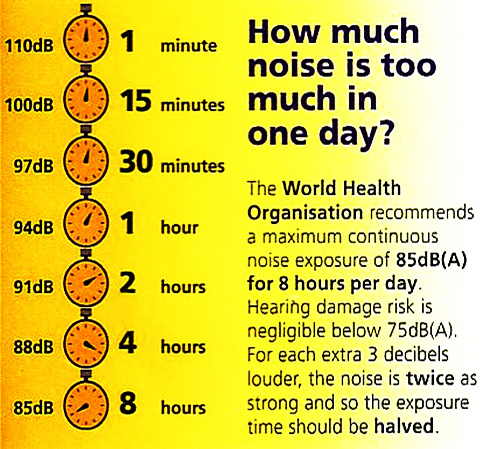 |
|
|
|
|
Hearing Conservation Resources for Future Reference
|
|
Loyola Marymount University - School of Film & Television